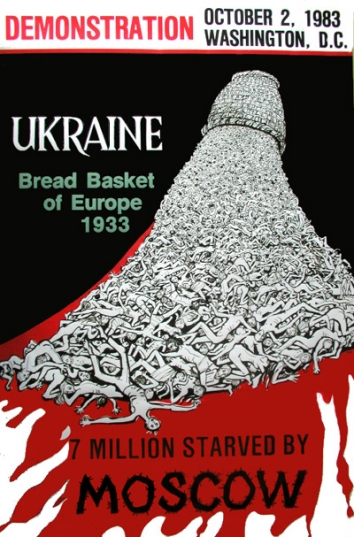Featured Galleries USUBC COLLECTION OF OVER 160 UKRAINE HISTORIC NEWS PHOTOGRAPHS 1918-1997
 Holodomor Posters
Holodomor Posters

Mining & metals deal making slows but opportunities remain
 Ernst & Young LLC, Kyiv, Ukraine
Ernst & Young LLC, Kyiv, Ukraine
6 November, 2012
LONDON, 6 NOVEMBER 2012 – Ernst & Young’s analysis of transactions, financing and capital raising in the global mining and metals sector for the nine months to the end of September shows total deal volume is down 16% and total deal value is down 43% compared to the same period in 2011.
This is on par with the trend to the end of Q2, when deal volume and value were down 19% and 38% respectively. Globally, there were 684 mining and metals sector completed deals for total deal value of US$76.8 billion for January-September 2012.
“Mining cost inflation, slowing economic growth, heightened geopolitical risk and volatile prices have stalled M&A decisions this year, as mining and metals companies focus on capital optimisation and portfolio rationalization. Combined with the US elections and the leadership transition in China, there is an element of ‘wait and see’ across the sector,” says Lee Downham, Ernst & Young’s Global Mining & Metals Transaction Leader.
“It’s been a quiet quarter and we do not expect to see any significant spike in deal value or volume for the remainder of the year.”
Ernst & Young’s newly released Global Capital Confidence Barometer for Mining & Metals shows mining and metals companies’ focus on growth has slipped from 53% in April to 38% now, while almost a third of respondents now view cost reduction and operational efficiency as key focus areas for the next 12 months.
Downham says this is also reflected in the rising number of divestments and non-core asset sales in Q3, a trend that is likely to continue through the rest of the year. “M&A activity in the short term is going to be opportunistic, with lower valuations and asset disposals presenting attractive buying opportunities for those with cash,” he says. Additionally, deals that help drive down costs through economies of scale or operating synergies will be attractive.
“There is also a significant amount of cash looking at the sector, primarily from the specialist funds and state owned enterprises looking to secure minerals supply or invest at what they perceive to be the bottom of the cycle,” says Downham.
Capital raising & financing
Globally, annual capital raising activity by the sector is set to decline for the first year since 2009, with a fall in all asset classes except bonds which continue their record run.
Total capital raised by the sector for January-September 2012 was down 37% to US$174 billion compared to the same period last year.
Corporate bonds reached a record US$87 billion raised from January-September this year, already above the 2011 total of US$84 billion.
“There doesn’t seem to be any sign of the appetite for bond issues slowing. The majors have used corporate bonds extensively and will continue to do so if pricing is attractive. However, the need is diminishing as project development has slowed due to softening market conditions,” says Downham.
All other asset classes declined for January-September 2012. IPO value and volume for the nine months was down 82% and 47% respectively, follow-on equity is 60% down, convertible bonds down 3% and loans were down US$57% in value and 43% drop in value.
Juniors
“Juniors are having a very difficult time raising cash due to the poor equity market conditions. As a result, there are a number of funds targeting the sector, looking for minority stakes that can be a lifeline for the junior while giving the investor the access to off-take or an option over future stake building.”
“The other trend we are seeing is juniors merging to generate greater size benefits and preserve cash.”











